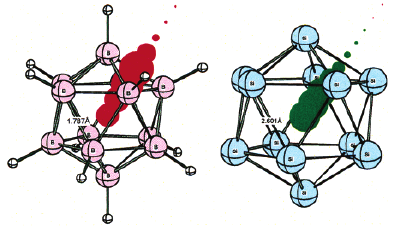-
Induced magnetic fields in aromatic [n]-annulenes-interpretation of NICS tensor components
C. Corminboeuf, T. Heine, G. Seifert, P.R. Schleyer and J. Weber
Physical Chemistry Chemical Physics, 6 (2) (2004), p273-276


DOI:10.1039/b313383b | unige:3708 | Abstract | Article HTML | Article PDF
The components of nucleus-independent chemical shift (NICS) tensors for Dnhn-annulenes are discussed as indexes of the aromatic character of electronic Ï systems. The component corresponding to the principal axis perpendicular to the ring plane, NICSzz, is found to be a good measure for the characterisation of the Ï system of the ring. Isotropic NICS values at ring centres contain large influences from the Ï system and from all three principal components of the NICS tensor. At large distances away from the ring center, NICSzz, which is dominated by contributions from the Ï system, characterizes NICS well.

